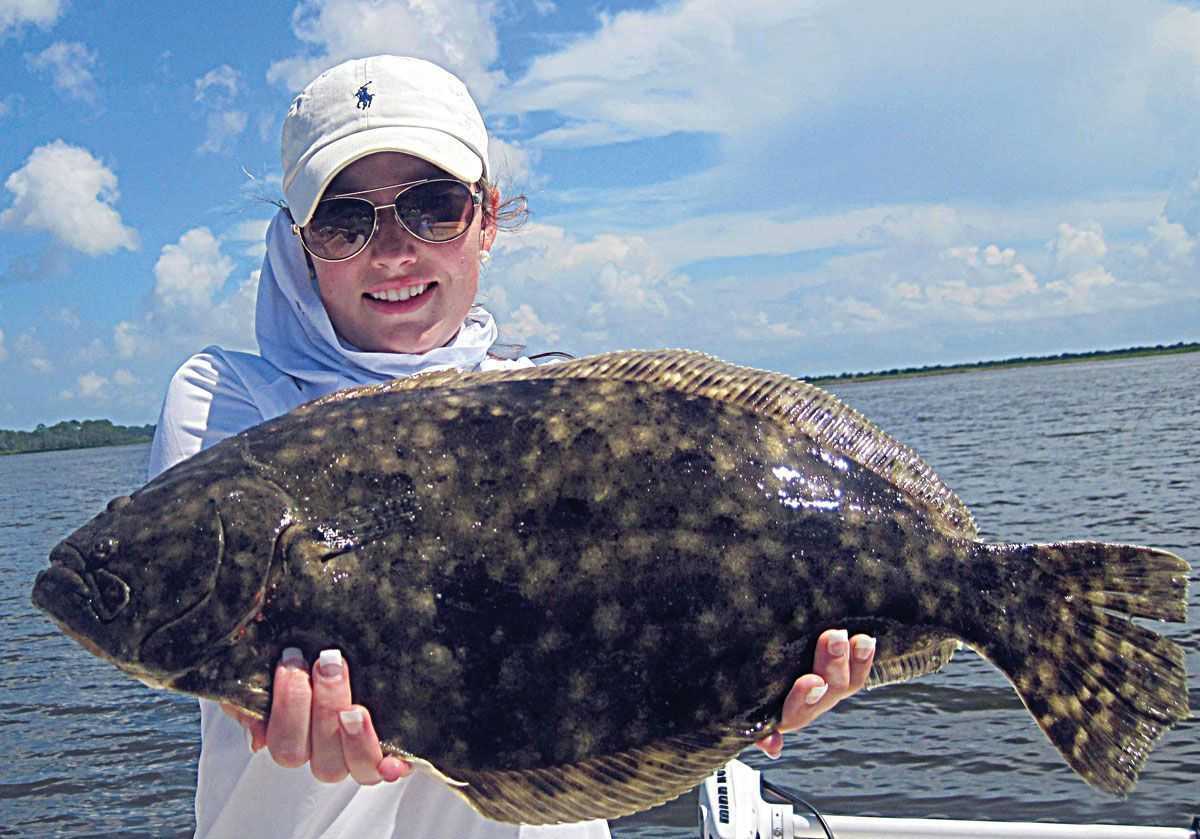Capt. Tim Cutting
If you are fortunate enough to either live or visit the Southeastern or Gulf states during October, you will catch big flounder and bull redfish. In fact, the run of both these fish have been in full force in the Mid-Atlantic States for the past few weeks. It’s not so much a phenomenon as it is a fact of nature. Big breeder redfish in the 20- to 50-pound class and flounder in the 5- to 10-pound range flock to inlets, sounds and beaches throughout the south.
While the methods for catching these fish will vary, it will be entirely possible to catch both in the same locations. While flounder are solely looking to fatten up before sliding into their winter haunts, the big breeder reds are eating hard as their procreation habits this time of year has generated a big appetite.
October will yield big numbers of younger and smaller reds and flounder, but this time of year is optimal for targeting bigger fish as the pattern is a fairly reliable one. Bull redfish and large flounder love to roam the jetties throughout the south this time of year, and almost every coastal state has them. Redfish will often work all portions of the jetties whereas the flat fish will hug the rocks a tad tighter. Both these fish will readily hit artificial lures for those anglers able to work the rocks with trolling motors. Fishermen seeking redfish and flounder with artificials will do well with deep-running crankbaits, swim baits and jigs and plastics. Anglers should work the deeper channels as well as bounce their offerings of the rocks. For those using live or cut bait, a finger mullet will be hard to beat, but both flounder and reds will take live baits of just about any variety. Many anglers targeting big bull reds will use either a half or quartered blue crab.
For those areas that do not have a defined set of jetties around inlets and sounds, redfish and flounder will still be just as prevalent. Big bull redfish will roam the surf line, sand bars, rips, deep holes and other areas where current is present. Big flounder can be caught in the same areas, but concentrate your efforts on man-made structure near inlets and sounds. Docks, seawalls, wrecks, bridge pilings, ship basins, marinas and any cluttered debris will hold the largest of flounder.
The tackle will differ on these two fish, but is still fairly simplistic. It is important to remember that fishing for big redfish is purely catch and release in most areas, and proper care and handling is critical, as these breeders are our future. I suggest a minimum of 20-pound mono or braid, and heavier is better, so fish can be brought to the boat for a quick picture and release. I like to hold the fish in the water by the tail until he kicks away on his own. I highly recommend circle hooks whenever possible for redfish, especially when using live or cut bait, as this will go a long way in preventing these trophy fish from swallowing the hook.
When fishing for big flounder, catch and release is very admirable, but I suggest eating them as well! Live baiters need to remember that, unlike redfish, flounder like their bait alive and tend to grab the bait and remain stationery. Often flounder will need to “turn” the bait in order to fit into their fairly narrow gullet. As a rule, if you think you are getting bit, hesitate a full 5 to 10 seconds and set the bait hard, as flounder have a tough woody mouth. For live bait, I like a kahle hook in 2/0, 3/0 and even 4/0 sizes, depending on the size of the bait. Go as light as you feel comfortable, but I like 20-pound braid with a 20-pound fluorocarbon leader. A fish-finder rig (Carolina rig) with a 6- to 8-inch leader will work fine, and use just enough weight to keep your bait on the bottom. Unlike fishing for reds, where the bait will remain planted to the bottom, slowly drag your bait when fishing for flounder.
For fear of backlash from many readers who have fished with me over the years, I need to disclose my flounder technique. I do use 20-pound braid with a fluorocarbon leader, but I rely strictly on a white Gulp! 4-inch Swimming Mullet pinned to chartreuse jig head. I make short pitches to the above-mentioned structures, and if I feel anything resembling a flounder, I set the hook sharply and immediately. Flounder do not spook, and I have caught many flounder directly under the boat or vertical jigging.
[easy-social-share]

